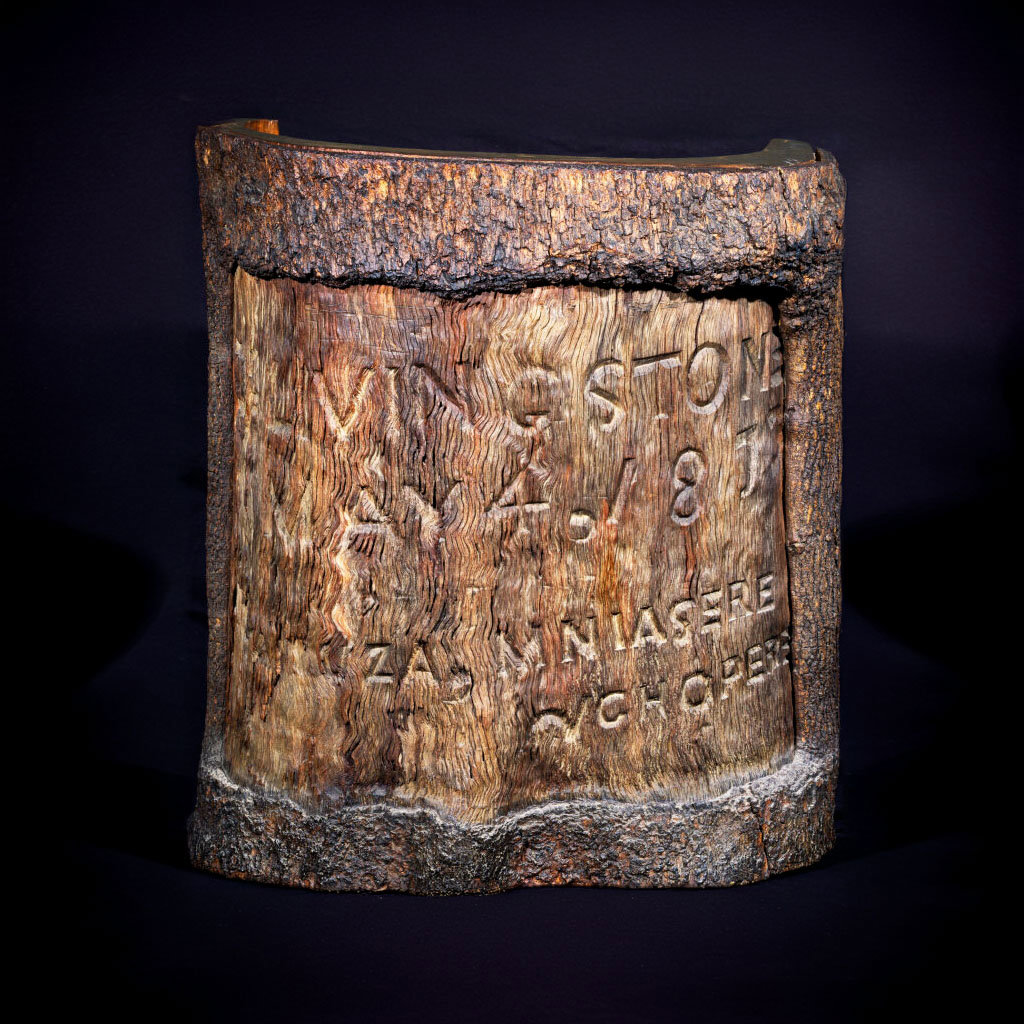Our Collections includes a photograph by Cecil Poulett Weatherley of the Mpundu tree at Chitambo's Ilala under which David Livingstone's heart was buried as well as part of the tree bark in which Livingstone's name has been inscribed.
The Mupundu, mpundu or mvulu - or Parinari curatellifolia - is a large evergreen tree, with rough bark of dark grey, growing up to 20m in height. It has been recorded in African regions including Zambia, Kenya, Tanzania, and Uganda. Chitambo's village was in what is now Zambia, roughly south of Lake Bangweulu and its swamplands.
The Scottish missionary explorer David Livingstone reached the Bangweulu swamplands in April 1873. Already suffering from malaria and chronic dysentery, his arrival at the height of the floods quickly worsened his condition.
Livingstone’s death and tree bark
Chitambo's settlement was the first dry land Livingstone and his companions had seen for some time. Livingstone was very weak and had to be carried to a hut where he died on 1 May 1873.
His companions buried his heart - which they said, 'belonged to Africa' - under a large Mpundu tree (as seen in the photograph), Jacob Wainwright inscribing the message '[Dr] Livingstone May 4, 1873 [Yazu]za Mniasere [V]chopere' on to the tree bark.

They then carried his body back to Dar es Salaam on the Tanzanian coast, to be shipped back to England. Livingstone’s body came first to the Society, then housed at 1 Savile Row, and lay in state in the Map Room before being moved to Westminster Abbey for his state funeral. Two of Livingstone’s companions, James Chuma and Abdullah Susi travelled to the UK to meet with Livingstone’s family and friends.
Preserving the Livingstone tree
This view of the 'Livingstone Tree' in situ was taken by Cecil Poulett Weatherley, prior to Richard Codrington's 1899 expedition, which aimed to save the inscribed bark section before the tree was completely consumed by insect activity and rot.
The section now forms part of the Society’s Collections and can be seen on display in the large case adjacent to the photograph. The original site of the tree is currently occupied by a memorial to Livingstone, erected in 1902. It takes the form of an obelisk, bearing metal plaques and surmounted by a cross.
Further readings
Kennedy, Dane. The Last Blank Spaces: Exploring Africa and Australia. Cambridge, Mass.: Harvard University Press, 2013.
Pettitt, Claire. Dr. Livingstone, I Presume?: Missionaries, Journalists, Explorers, and Empire (Profiles in History). Cambridge, Mass.: Harvard University Press, 2007.
Memorial to Dr. Livingstone in The Geographical Journal, Vol. 15, No. 6 (June 1900), pp. 636-639.
Unveiling of the Livingstone Statute in The Geographical Journal, Vol. 120, No. 1 (March 1954), pp. 15-20.
